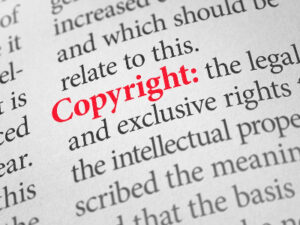Copyright registration is a fundamental legal step to protect your creative works, whether you’re an artist, writer, musician, or any other creative professional. It grants you exclusive rights to your original work, preventing others from using, copying, or reproducing it without your permission. In this step-by-step guide, we’ll demystify the process of filing a copyright registration, making it more accessible and understandable for creators and innovators.
What Is Copyright Registration?
Copyright registration is a legal process that grants you, as the creator of an original work, exclusive rights to that work. These rights include the ability to reproduce, distribute, display, and perform your work, as well as the authority to create derivative works based on your original creation. In essence, copyright registration is a way to assert and protect your intellectual property rights.
Here’s a breakdown of the key aspects of copyright registration:
1. Ownership: Copyright registration establishes your ownership of a creative work, giving you the legal right to control its use and distribution.
2. Protection: It provides protection against unauthorized copying, distribution, or reproduction of your work.
3. Evidence: A copyright certificate serves as evidence that your work is original and protected under copyright law.
4. Enforcement: Registration is a prerequisite for initiating a legal action against anyone infringing on your copyright.
5. Duration: Copyright protection generally lasts for the lifetime of the creator plus an additional 70 years.
Now, let’s explore the step-by-step process of filing a copyright registration.
Step 1: Determine Eligibility
Not all creative works are eligible for copyright protection. To be eligible, a work must meet certain criteria:
- Originality: The work must be an original creation, meaning it wasn’t copied from someone else’s work. It should reflect your own intellectual effort and creativity.
- Fixation: The work must be “fixed in a tangible medium,” which means it must exist in a format that can be perceived or reproduced, such as a written document, a recorded song, or a piece of artwork.
- Categories: Copyright protection covers a wide range of creative categories, including literary works, visual arts, performing arts, sound recordings, and architectural works.
- Nationality: Copyright registration is generally available to both U.S. and non-U.S. citizens, provided that the work was created in the United States or originates from a country with which the United States has a copyright treaty.
Step 2: Gather Your Materials
Before starting the registration process, ensure you have the following materials ready:
- The Work: Have a copy of the work you want to register. This might be a manuscript, artwork, music composition, software code, or any other form of creative content.
- Title and Description: Be prepared to provide a title and a brief description of the work. The description should clarify what the work is about and what makes it unique.
- Author Information: You’ll need to supply your personal information as the author of the work, including your full name and contact details.
Step 3: Complete the Application
The next step is to complete the copyright registration application. The application process can be done online through the U.S. Copyright Office’s electronic registration system (eCO). Here’s how to proceed:
- Create an eCO Account: Visit the U.S. Copyright Office’s website and create an eCO account. You’ll use this account to manage your registration application
- Choose the Right Form: Select the appropriate registration form based on the type of work you’re registering. The most common forms are TX for literary works, VA for visual arts, and PA for performing arts.
- Fill Out the Form: Complete the registration form with all the required information, including the title of the work, author details, and a description of the work.
- Pay the Fee: Copyright registration typically comes with a fee. Make sure to pay the required fee for your registration.
- Upload the Work: You’ll need to upload a digital copy of the work you’re registering. Ensure the file adheres to the specific format and size requirements.
Step 4: Review and Submit the Application
After filling out the application and uploading your work, review all the information you’ve provided. Double-check the accuracy of the details, as errors could potentially affect your registration. Once you’re confident that everything is correct, submit the application.
Step 5: Waiting Period
After submitting your application, there is a waiting period while the U.S. Copyright Office reviews your submission. This process can take several months, so be patient.
Step 6: Receive a Copyright Certificate
Once the U.S. Copyright Office has reviewed and approved your application, you’ll receive a copyright certificate. This certificate is your official proof of copyright protection.
Step 7: Enforcement and Monitoring
With your copyright certificate in hand, you now have the legal backing to protect your work. Here are some key considerations for enforcement and monitoring:
- Enforcement: If someone infringes on your copyright, you can take legal action against them. This may include sending cease and desist letters, negotiating settlements, or pursuing legal remedies in court.
- Licensing: You can grant licenses to others, allowing them to use your work under specific terms and conditions. Licensing can be a source of revenue for creators.
- Monitoring: Keep an eye on how your work is used and whether it’s being used without your permission. Online tools and services can help you monitor for potential copyright infringements.
Additional Tips and Information
- Copyright Notices: While not required, including a copyright notice (© [Your Name] [Year]) on your work can help inform others of your copyright and deter potential infringers.
- Duration: Copyright protection typically lasts for the lifetime of the creator plus 70 years. After this period, the work generally enters the public domain.
- Renewal: In most cases, copyright registration is not subject to renewal. However, there are exceptions for works created before 1978. Consult the U.S. Copyright Office for specific details.
- International Copyright: Copyright protection is not limited to the United States. Many countries are signatories to international copyright treaties, which offer protection to foreign works.
- Fair Use: Copyright law provides for “fair use,” allowing others to use copyrighted works for purposes such as education, commentary, and criticism without infringing on the copyright holder’s rights.
Copyright registration is a crucial step for creators to protect their original works and assert their rights. It provides legal evidence of ownership and the exclusive right to use, reproduce, and distribute creative content. While the process may seem complex, it is accessible and manageable, and it offers valuable legal protection for your intellectual property. Whether you’re an artist, writer, musician, or creator in any field, copyright registration can help safeguard your work and provide peace of mind.
For more information on the process of obtaining a copyright registration, contact Franchise Marketing Systems (FMS Franchise):














